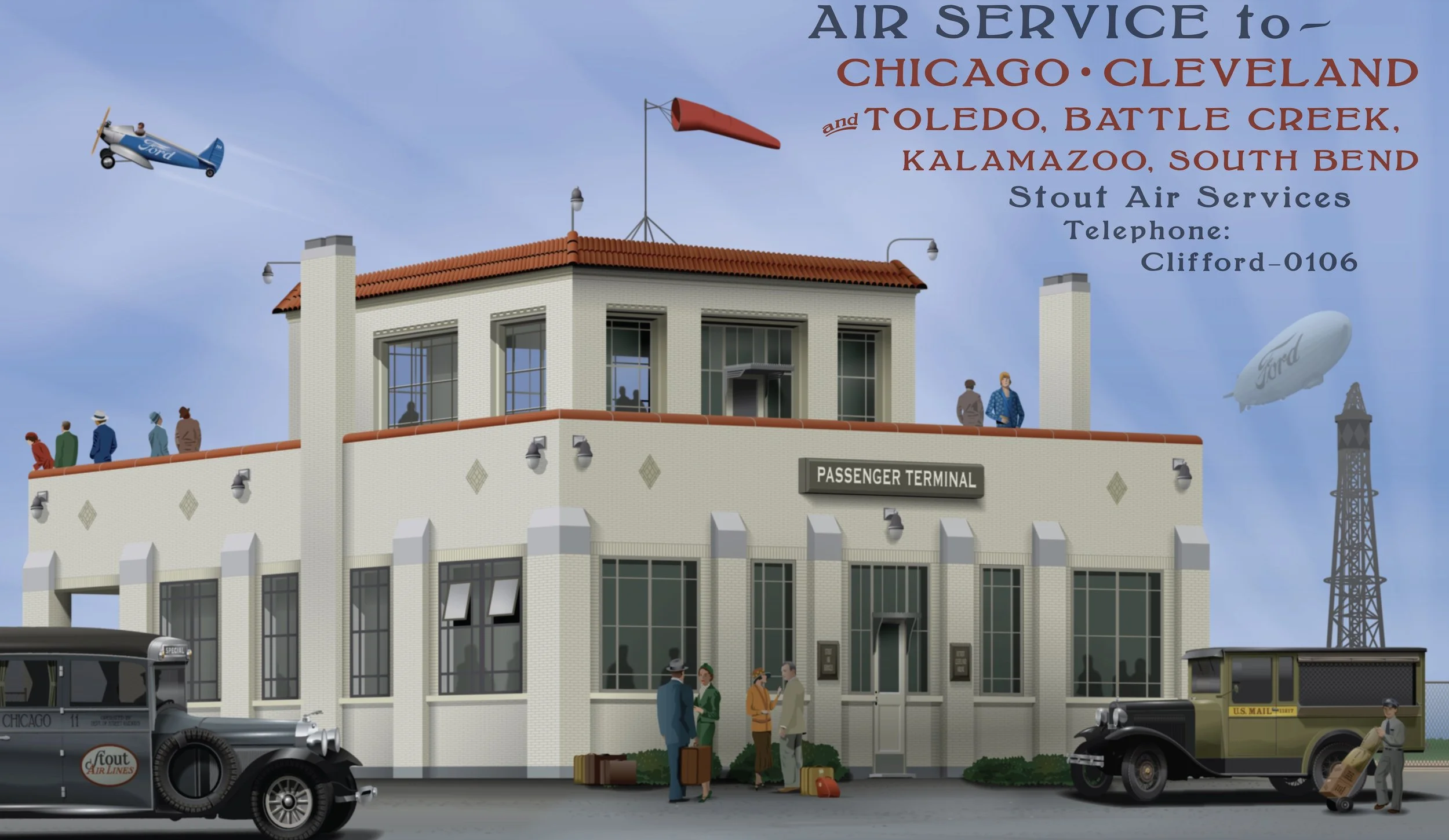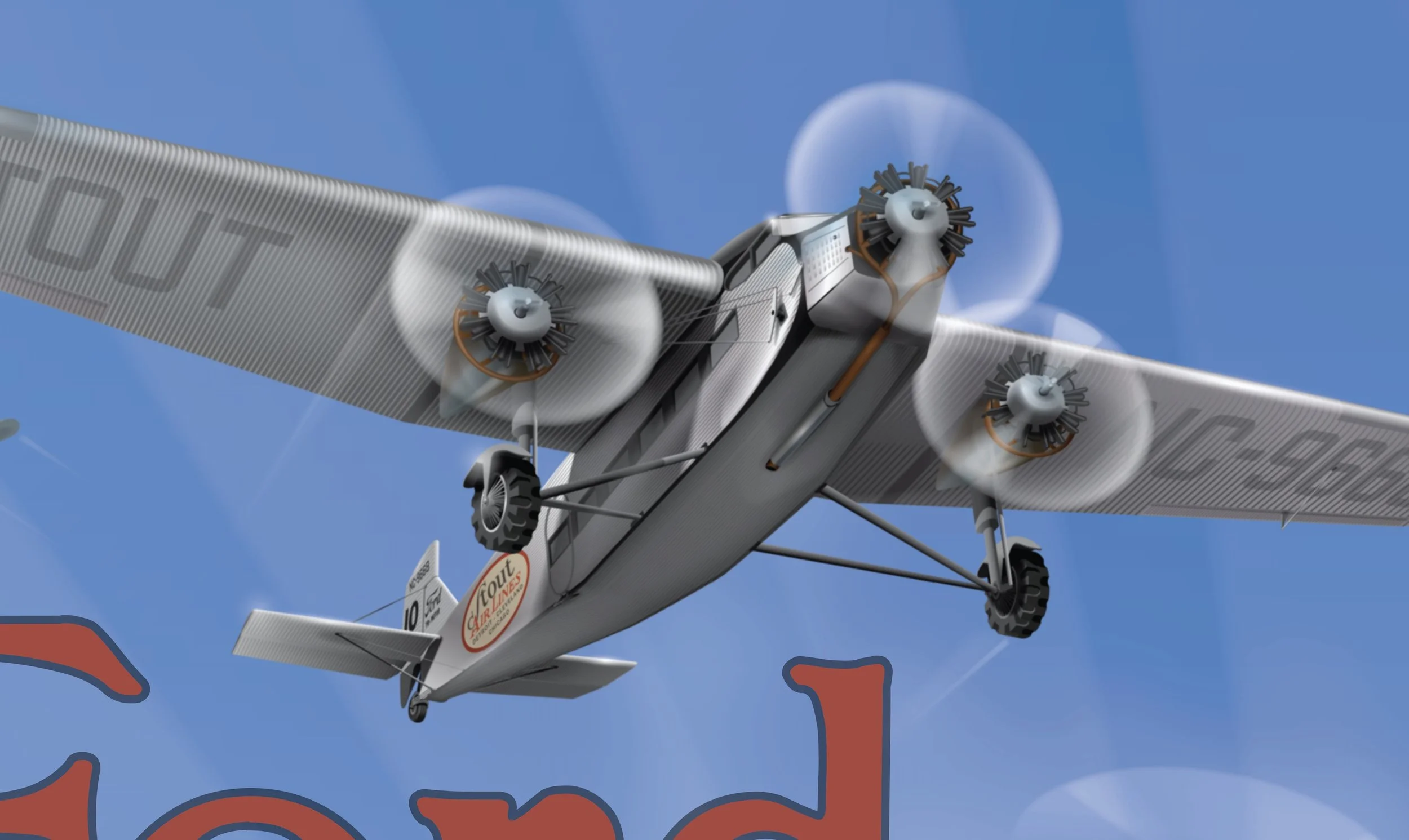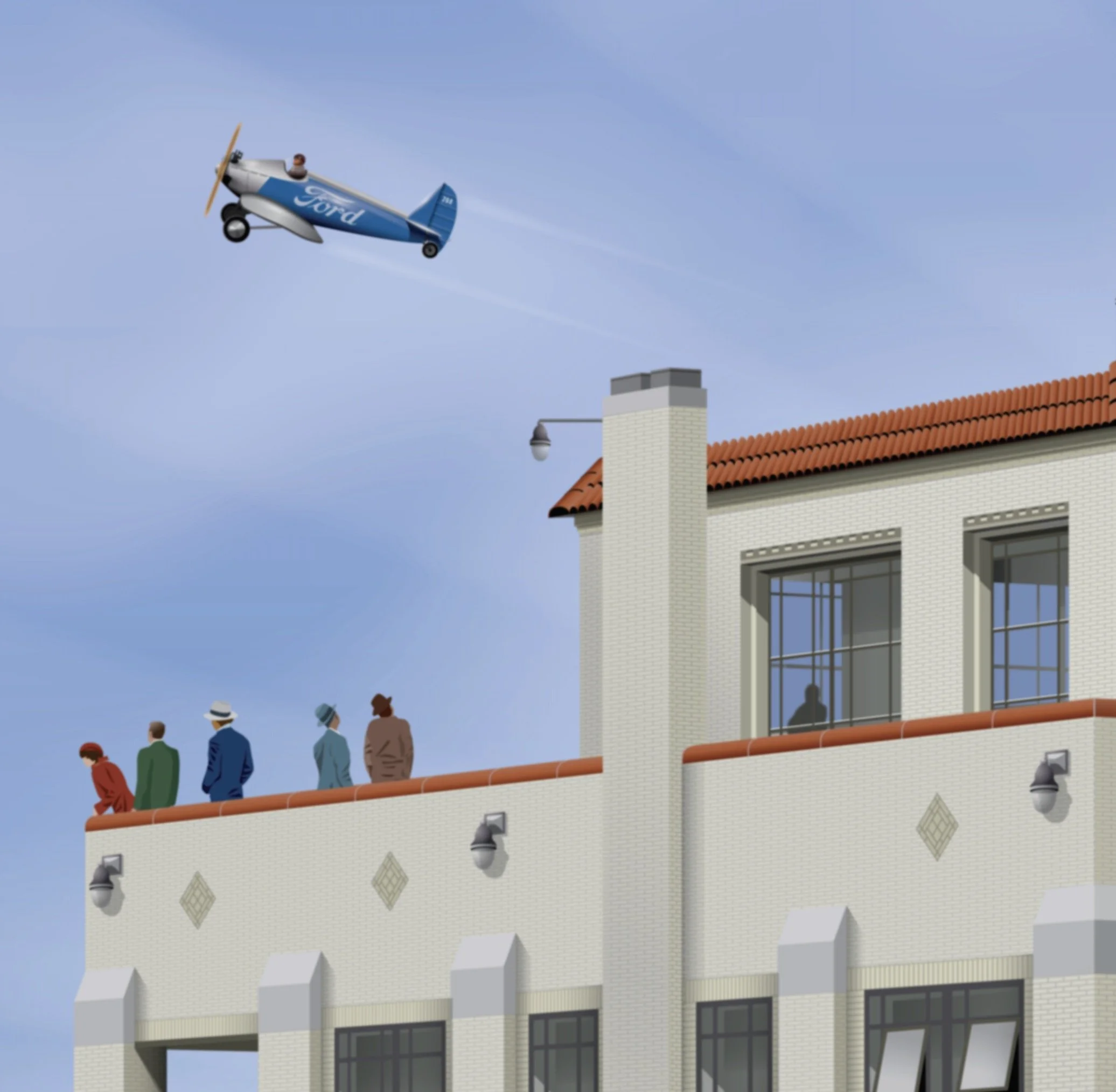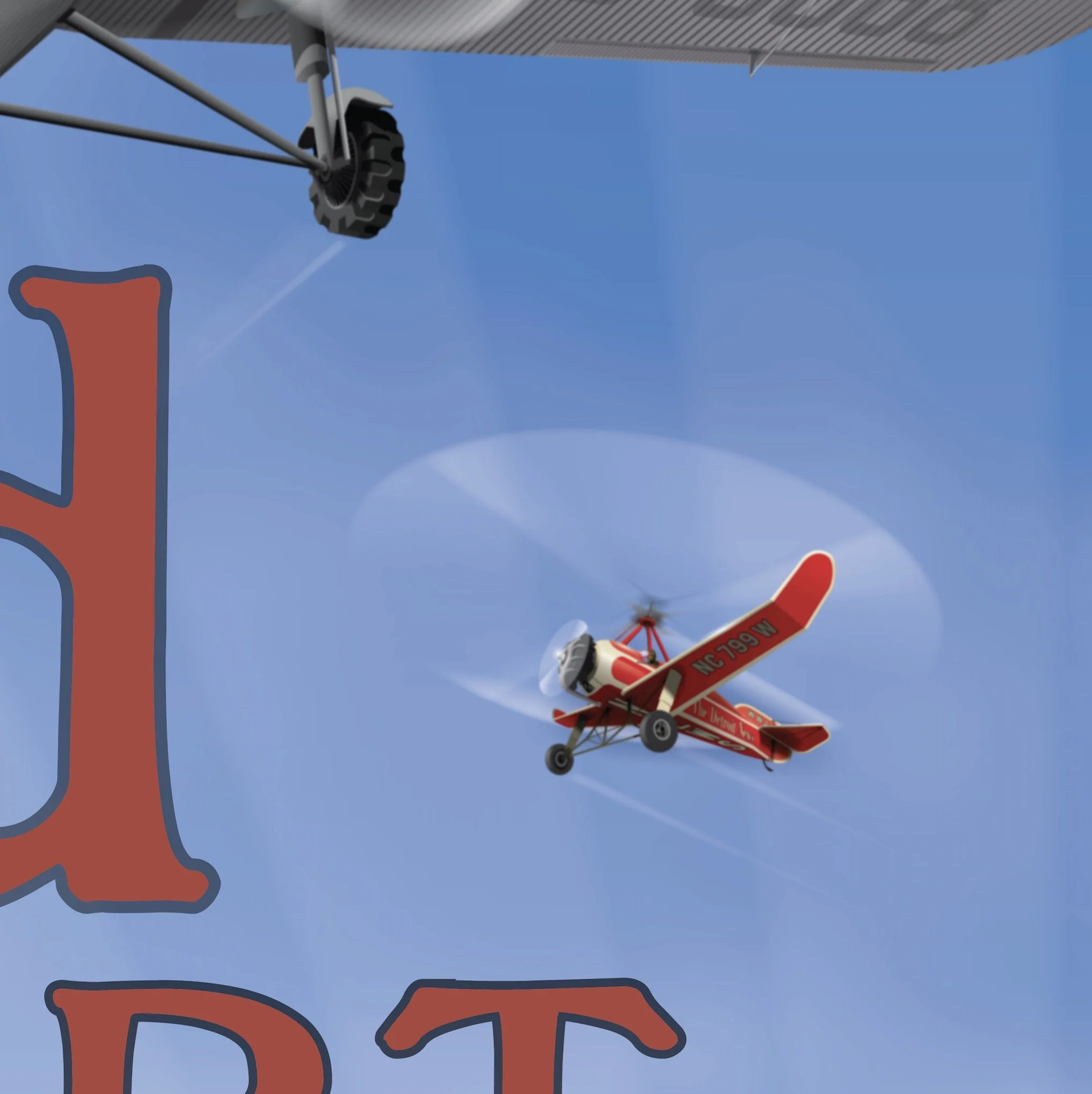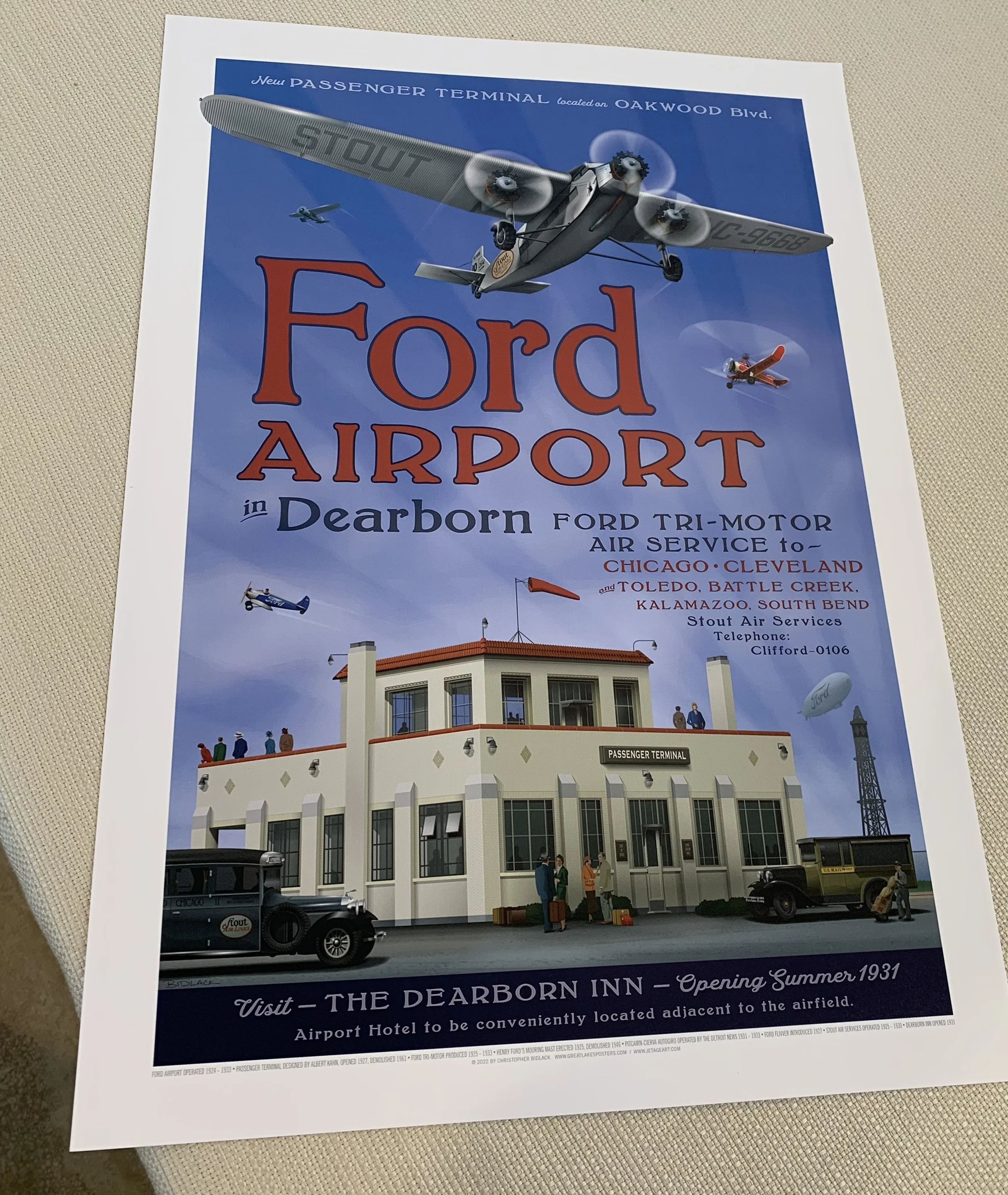FORD AIRPORT-DEARBORN POSTER
FORD AIRPORT-DEARBORN POSTER
Poster size is 14" wide by 20" tall, including a one-inch white border, and is printed on heavyweight, acid-free poster stock.
Chris Bidlack's illustrated Ford Airport poster brings alive one of America's most-forgotten airports (and perhaps its most-forgotten air terminal), in the style and form of an advertisement for air travel via the airfield, circa 1929.
Once the aviation jewel Dearborn, Michigan, and the centerpiece of Henry Ford's many aviation diversions, almost no trace remains today of what was arguably America's best-known airfield of the early 1920s.
Ford Airport was the first airport with concrete runways and the first with a night lighting system. The airfield was also the site of the first contracted airmail service in the U.S., and the location of the first radio control of a commercial flight. But more noteworthy to fans of Detroit architect Albert Kahn, the poster highlights America's first passenger terminal, designed by the famous architect and opened in 1927. (Standing just across the street was the country's first airport hotel, the Dearborn Inn—also designed by Kahn—which remains in business today.
The poster is full of history: The upper portion features a Ford Tri-Motor, specifically Ship 10 of Stout Air Services, an early airline founded by William Stout, engineer, businessman, and the man behind many of Ford's aviation endeavors, including the Tri-Motor itself. Stout established the first regularly scheduled passenger airline in the U.S., and his name was synonymous with Henry Ford and Ford Airport.
In addition to the Ford Tri-Motor, the other airplanes illustrated include a Pitcairn-Cierva Autogiro (operated by the Detroit News from 1931 to 1933), a Lockheed Vega, and at the lower left, the tragic Ford Flivver, perhaps flown by test pilot Harry Brooks.
The lower portion of the print features Albert Kahn's beautiful but long-forgotten Ford Airport Passenger Terminal, which featured many windows, a clay tile roof and parapet edging, and a prominent observation deck. Air passengers were transported to and from the Dearborn Inn on Stout passenger busses, as seen at the lower left. In the distance beyond the terminal at the right, stood Henry Ford's peculiar 210-foot tall dirigible mooring mast, erected in 1925 with high hopes for the future but only used twice. (Artistic license was employed with the inclusion the FORD dirigible in the illustration.) The mast's mooring equipment was removed in 1935, and the mast itself was demolished 1946.
As other Detroit area airports grew, Henry Ford's airport did not. The airfield and Kahn's passenger terminal were closed in 1933. The site is now home to the Ford Motor Company's Dearborn Development Center (formerly the Dearborn Proving Ground). The last standing artifact of the airfield, the Ford Airport hangar building along Oakwood Boulevard, survives today as the Ford Experimental Engine Building. Kahn's passenger terminal building was demolished in 1961.
Your Ford Airport print will arrive carefully packaged and ready for you to unroll and frame. (Framing instructions included.) Click on the image to see the full poster in detail. (And of course, the watermark does not appear on the actual poster.)

